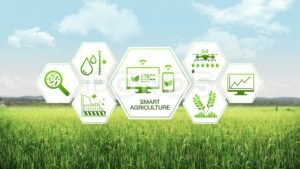Introduction
Ever wondered how the stuff our world is made of is evolving? Picture this: a future where the materials we use don’t just end up in landfills, but actually help heal the planet. That’s the magic of biodegradable polymers. These innovative materials are turning the tide on environmental damage and bringing about a sustainable revolution. Let’s dive into the incredible ways biodegradable polymers are reshaping industries across the globe.

What Are Biodegradable Polymers?
Biodegradable polymers are a game-changer. Simply put, they’re plastics that break down naturally over time through the action of microorganisms. Unlike traditional plastics, which can linger in the environment for centuries, biodegradable polymers decompose into harmless substances like water, carbon dioxide, and biomass. They boast key characteristics such as biocompatibility, eco-friendliness, and the ability to be derived from renewable resources.
Environmental Benefits of Biodegradable Polymers
The environmental benefits of biodegradable polymers are immense. By significantly reducing plastic waste, they help mitigate the pollution problem that’s plaguing our planet. Traditional plastics are notorious for their persistence, often ending up in oceans and harming marine life. In contrast, biodegradable polymers degrade safely, leaving no toxic residues behind. Additionally, their production often results in a lower carbon footprint, contributing to the fight against climate change.
Biodegradable Polymers in Packaging
One of the most promising applications of biodegradable polymers is in packaging. Think about the amount of plastic waste generated from food and retail packaging alone. Biodegradable polymers offer a sustainable alternative, ensuring that our packaging materials don’t end up polluting the environment. Innovations in this field include compostable food wrappers, biodegradable shopping bags, and eco-friendly bubble wrap. These materials are designed to degrade quickly after use, significantly reducing the burden on waste management systems.
Medical Applications of Biodegradable Polymers
The medical field is also reaping the benefits of biodegradable polymers. These materials are used in drug delivery systems, where they safely dissolve in the body after releasing their therapeutic payload. Biodegradable implants, such as sutures and stents, offer a safer alternative to traditional materials, reducing the need for additional surgeries to remove them. In wound care, biodegradable polymers are used to create advanced dressings that promote healing and minimize scarring.
Agricultural Uses of Biodegradable Polymers
In agriculture, biodegradable polymers are transforming farming practices. Mulch films made from these materials provide effective weed control while decomposing naturally into the soil, enriching it with nutrients. Controlled-release fertilizers encapsulated in biodegradable polymers ensure that nutrients are delivered to plants over time, improving crop yields and reducing environmental runoff. These applications not only enhance agricultural productivity but also promote sustainable farming practices.
Biodegradable Polymers in Consumer Goods
Look around your home, and you’ll likely find numerous items made from traditional plastics. Now imagine those same items made from biodegradable polymers. Everyday products like cutlery, toothbrushes, and even toys are being reinvented with sustainability in mind. These sustainable alternatives not only reduce our reliance on non-renewable resources but also ensure that the products we use daily have a minimal environmental impact.
Innovations in Biodegradable Polymer Technology
The world of biodegradable polymers is constantly evolving. Researchers are developing new types of biodegradable materials with enhanced properties, such as increased strength and faster degradation rates. Future trends point towards the use of bio-based feedstocks, like plant oils and starches, to produce these polymers. Innovations in this field promise to expand the range of applications and improve the performance of biodegradable materials.
Economic Impact of Biodegradable Polymers
The economic impact of biodegradable polymers is multifaceted. As the demand for sustainable products grows, the biodegradable polymer industry is creating new job opportunities across the supply chain, from research and development to manufacturing and sales. Although the initial costs of biodegradable polymers can be higher than traditional plastics, their long-term benefits, such as reduced waste management costs and compliance with environmental regulations, make them a cost-effective choice in the long run.
Challenges Facing the Biodegradable Polymer Industry
Despite their many advantages, biodegradable polymers face several challenges. Technical issues, such as achieving the desired balance between durability and degradability, can complicate their development. Market adoption is another hurdle, as consumers and industries are often hesitant to switch from conventional plastics. Overcoming these challenges requires ongoing research, public education, and supportive policies.
Legislation and Policies Supporting Biodegradable Polymers
Governments around the world are recognizing the importance of biodegradable polymers in achieving environmental goals. Policies and incentives are being implemented to encourage the production and use of these materials. For instance, some countries have introduced bans on single-use plastics, driving demand for biodegradable alternatives. Global cooperation and consistent regulations are essential for maximizing the impact of these initiatives.
Biodegradable Polymers in the Automotive Industry
The automotive industry is also exploring the potential of biodegradable polymers. These materials are being used to manufacture car parts, such as interior panels and trim, that decompose naturally at the end of their lifecycle. This not only reduces the environmental impact of vehicles but also aligns with the industry’s shift towards sustainable practices. The benefits for the automotive sector include weight reduction, which improves fuel efficiency, and the ability to meet stringent environmental standards.
Case Studies: Successful Implementations of Biodegradable Polymers
Real-world examples illustrate the transformative power of biodegradable polymers. Companies across various industries are adopting these materials to meet sustainability goals and consumer demands. For instance, a leading food packaging company has replaced conventional plastic wrappers with compostable films, significantly reducing their environmental footprint. Similarly, a medical device manufacturer has developed biodegradable stents that safely dissolve after fulfilling their purpose, minimizing the risk of long-term complications.
How to Choose the Right Biodegradable Polymer for Your Needs
Selecting the appropriate biodegradable polymer for a specific application involves several considerations. Factors such as the intended use, desired properties, and environmental conditions play a crucial role. It’s essential to understand the polymer’s degradation rate and compatibility with the intended environment. Practical tips include consulting with experts, conducting thorough testing, and considering the entire lifecycle of the product.
Conclusion
Biodegradable polymers are revolutionizing industries by offering sustainable alternatives to traditional plastics. Their applications span across packaging, medicine, agriculture, consumer goods, and even the automotive sector. While challenges remain, the potential benefits of these materials are immense. By embracing biodegradable polymers, we can reduce environmental impact, support economic growth, and pave the way for a greener future.
FAQs
- What are biodegradable polymers made of? Biodegradable polymers are typically made from renewable resources such as plant starches, cellulose, and proteins. Some are derived from microbial fermentation processes.
- How long do biodegradable polymers take to decompose? The decomposition time of biodegradable polymers varies depending on the material and environmental conditions. It can range from a few months to several years.
- Are biodegradable polymers more expensive than traditional plastics? Initially, biodegradable polymers can be more expensive than traditional plastics. However, their long-term environmental and economic benefits often offset the higher upfront costs.
- Can biodegradable polymers be recycled? Some biodegradable polymers can be recycled, but the process is different from conventional plastics. It’s essential to follow specific recycling guidelines for these materials.
- What is the future of biodegradable polymers? The future of biodegradable polymers looks promising, with ongoing research and development aimed at improving their properties and expanding their applications. Increased consumer awareness and supportive policies are expected to drive further adoption.





